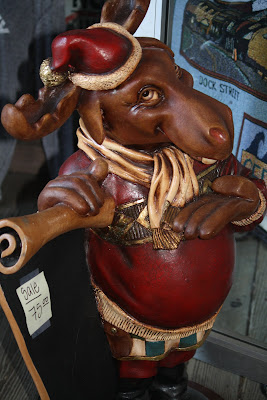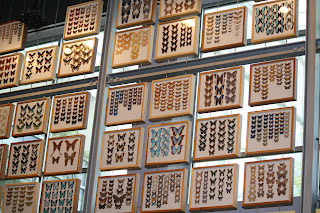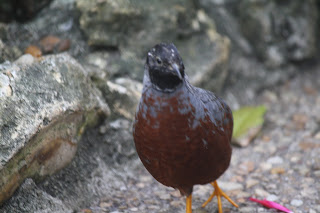http://brooksvilleraidreenactment.com/
http://www.hernandohistoricalmuseumassoc.com/
Hwy. 50 West at the
Sand Hill Scout Reservation
(Across from Oak Hill Hospital)
Third weekend January annually
The Brooksville Raid—the Early Days
http://www.hernandohistoricalmuseumassoc.com/
Hwy. 50 West at the
Sand Hill Scout Reservation
(Across from Oak Hill Hospital)
Third weekend January annually
The Brooksville Raid—the Early Days
Our Brooksville Civil War event is one in which we participated for either twenty-two or twenty-three years…first as on-the-field re.enactors for many years. Early on Steve was a private with the 1st Minnesota. Most re.enacting groups in Florida take the name of an original regiment who fought or were garrisoned here…97th Pennsylvania, 4th Florida. The First Minn never came to Florida, but the first guys to organize it were from Minnesota. The original regiment has a dynamic history. General Hancock sent them in at Gettysburg to “plug a hole” in the line. Eighty-seven percent of those that fielded that day were casualties. (Remember casualties in this time-frame meant killed, wounded, or missing.) They were said to be the first volunteer group. The governor was sitting in a Washington office (maybe Lincoln’s) when the call for 75,000 troops went out to the northern states. The governor immediately volunteered the First Minnesota. The original regiment also participated in Indian Wars before marching off to the East. And, later they participated in squelching the riots in New York City. Anyway, brothers Kevin and Sean thought our re.enacting group could easily mimic the original group. Thus, our name.
I worked with Dr. Tom as a field nurse and brought water to the troops. He also wanted us to know basic first aid and CPR. He was a para-medic in today’s life. The job of the field nurses were multi. One was to make sure the participants had enough water. This is Florida. We dehydrate easily and unknowingly. Our second task was to help with people who were injured. As much as we try to practice all safety measures, things happen…from soldier “dying” on a mound of fire ants, to black powder burns, and an occasional broken bone. The third thing is to look good to the paying public…this, of course, is good, but must come after the care of our troops. Sometimes, however, taking care of the troops with real problems also looks good to the unknowing public.
Sometimes the first-aid being administered is in the confines of the field hospital while we wait for the professionals to come. It looks real to the public, because, guess what, it is real.
Our surgeons and medical staff work really hard to make everything look real. All kinds of props and makeup are used to portray as accurately the actual way life may have been under the care of a Civil War surgeon or nurse. Our saw-bones surgeons often create the look of a real amputee or taste “pus” to see at what stage it has progressed,
However, all three examples happened with me as part of the nursing corps at Brooksville. There have been some other incidents at other events as well in which the nursing staff really were working rather than just play acting.
The ants: Those of us who live in Florida know what to look for in finding fire ant mounds. Others, not so much. The fire ants are nasty teeny tiny little critters. They will crawl on you and seem to all bite at the same time. Their bite is a combination of an ouchy sting and a horrible itch. Their sting is like a hot poker, thus they are called appropriately. One or two bites are painful. More can be dangerous. The incident which I witnessed was a man who did not know for what he should be looking. He took a hit and dropped to the ground “dead.” Yep, right on top of a fire ant hill. He had bites all over his legs and hands. We packed him in ice until medical attention came. The medics had to give him an antihistamine. I never saw him again, but I am assuming that he was eventually okay, albeit very itchy and sore.
That same year, one young man loaded his black-powder rifle. We believe that something was done incorrectly. Perhaps it did not fire, and he reloaded. There are others scenarios as well. We do not know the reason. When he fired it, it back-flashed—burned his stomach, hand and arm. He was brought into our medical hospital where demonstrations of Civil War medicines were being carried out. Doc Tom looked at him and ordered immediate ice placed on the burned places. I was one of the holders of ice. The public did not know the extent of the lad’s injury…they thought it was part of the show. An ambulance retrieved him and took him to the local hospital that was less than a mile away. Again, I think that things worked out for him.
A third injury in which I partook was a broken shoulder blade. That particular year I did not dress in my nurses “uniform,” but had dressed like a lady with a hoop skirt. The gentlemen involved was part of the cavalry. His horse was galloping at a good clip, when the horse caught his hoof in a gopher hole and threw the rider. The horse galloped off. He was eventually recovered some distance away. The rider, however, was withering in pain. I sent word (we have a word to use when we need real medical attention). The preacher’s camp was closest. He came with some ice. It was a hot, sunny day. The rider had fallen where there was no shade. We were concerned about shock. I dropped to my knees to give him a little protective shade until the real medical staff arrived.
Most of the medical scenarios are fun, as the surgeons get really gross and authentic. Civil War medicine was brutal. Amputations were common. The goal was to save as many lives as possible, rather than corrective, slower surgery. It should be noted, however, that, as in the case of each new war, a great deal of new medical procedures, technology, inventions, medicines emerge to make life easier for the general public. Play acting is fun and educational to do for the public. But the real satisfaction for me comes when one has actually helped someone in a real situation.
So, if you are looking at a medical scenario at a re.enactment, look carefully. It might be real.





























































